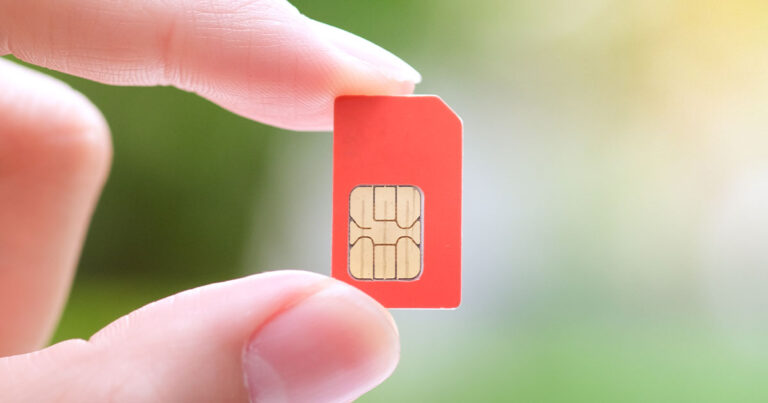A one-stop place for all of the main mobile plan terms explained in a straightforward way.
How do phone plans work
So, you know you need a mobile phone plan to pair with your mobile phone. That’s the easy part out of the way. But somewhere amid unlimited SMS and MMS mixed with standard calls to Zone 1 countries, the terminology used for mobile phone plans gets quite confusing.
Let’s start to demystify that (note that some of these terms cross over between categories).
Prepaid mobile phone plan terms
Prepaid plans are, as the name implies, mobile phone plans paid in advance of use. Generally, once the prepaid period expires—whether it’s a day, a month or a year—you need to pre-pay again to use your handset to do anything other than receive calls or make emergency calls.
Prepaid plans
These are the original form of Prepaid. In terms of the plans tracked in our comparison engine, Prepaid durations range from seven days to 365 days.
Prepaid durations
Normally we’d feel finicky going this granular on durations but, unlike SIM Only plans, Prepaid durations aren’t always a predictable day, especially when it comes to ‘monthly’ plans. Monthly Prepaid plans are either 28 days, 30 days or monthly durations. Similarly, long-expiry Prepaid plans can be anywhere from 60 days through to 180 days or six months, then 365 days or 12 months. It might not sound like a massive difference, particularly for the months, but it can impact yearly costs if you have to recharge 13 times (28-day duration) or 12 times (monthly).
Prepaid starter packs
The name pretty much says it all: you prepay for a period of time for a Prepaid starter pack that comes with a SIM card. Note that Prepaid starter packs tend to be cheaper and stuffed with data compared to typical Prepaid plans.
Prepaid recharge
This is a fancy term for a Prepaid plan, which Prepaid users have to pay for in advance in order to continue to make calls, send texts and use allocated data. Note that certain telcos offer auto-recharge, which automatically prepays for the next defined Prepaid period. Deactivate this feature if you want to have full control of your spending.
Prepaid subscription
A relatively new advent in this space, Prepaid subscriptions are auto-recharging Prepaid plans. Considering auto-recharge can be activated on Prepaid plans, this isn’t that fancy, until you get to ones like the Felix Mobile $35 Subscription, which comes with unlimited data (albeit capped at 20Mbps).

Data banking
As long as you maintain a Prepaid plan, either with an active subscription or manually recharging, a data bank will store your unused megabytes up to a fixed amount. This term is sometimes used interchangeably with data rollover (below), and data may expire if certain conditions aren’t met. For either option, stored data is only used once you exhaust your current allocation.
Data rollover
Data rollover is a lot like data banking, but it can get murky depending on the telco. For some telcos, data rollover is an interchangeable term for data banking with a fixed amount of perpetually paid-forward data for the life of your plan. For other telcos, data rollover may be limited to the next recharge only. Check the terms and conditions to be sure.
Days rollover
Exclusive to Optus, this feature lets you hang onto remaining days from a Prepaid period if you recharge ahead of expiry (up to 84 days total).
Call credit
Used for either national or international calls, this refers to a dollar amount that’s used to make calls with particular Prepaid plans.
Data gifting
As the name implies, data gifting lets you deduct some of your Prepaid data allowance and gift it to an eligible plan from the same telco.
SIM Only mobile phone plan terms
For the most part, SIM Only mobile phone plans are different to Prepaid plans primarily in terms of how you pay. Where Prepaid is paid at the start of a period, SIM Only plans are paid at the end of a billing cycle, which is the same day every month.
No contract
Also called month-to-month, ‘no contract’ refers to an unfixed duration for a SIM Only plan. This means you’re free to leave at any point without plan exit fees.
Data boost/top-up
If you exhaust the monthly data allocation of a SIM Only plan, you may be able to pay for more data automatically or manually in fixed blocks from your telco. The alternative to a data boost is paying extra per megabyte.
Capped data
Certain providers like Spintel let you cap your data so there aren’t any excess data fees if you go over your monthly data allowance.
Data banking
Data banking lets you hang on to unused data from one month for later months, as long as you have an active mobile plan. Note that this term is sometimes used interchangeably with data rollover (below).
Data rollover
Data rollover is effectively data banking in the SIM Only space it, which may either mean unlimited data banking (as is the case with Belong) or fixed caps from the likes of Mate, Numobile and Woolworths Mobile.

Data gifting
Telcos that offer data gifting let you gift blocks of your monthly data allocation to eligible plans.
Data cap/throttle
When you exhaust your monthly data allocation on a SIM Only plan, providers like Vodafone, Telstra and Optus will cap or throttle your speeds for the duration of the billing cycle. This helps avoid excess data fees.
Telstra Upfront
Just to make things trickier, Telstra defines its SIM Only plans as Telstra Upfront plans. They look very familiar to other SIM Only plans except, like Prepaid, they’re paid in advance of the month instead of at the end.
Postpaid mobile phone plan terms
Most terms for SIM Only mobile phone plans are relevant for Postpaid mobile phone plans. Why? The main difference between SIM Only and Postpaid plans is that the latter has users paying off a handset, whereas the former needs a handset to use.
Interest free
The trend for Postpaid plans is to offer handsets at interest-free costs, which helps avoid the initial cost of buying a phone outright.
Handset repayment terms
These days, telcos like Telstra, Optus and Vodafone let you pay off your handset over one-, two- or three-year periods. These will be represented as your choice of either 12-month, 24-month or 36-month handset repayment terms. Note that the corresponding Postpaid mobile plans will usually be month-to-month, but you will have to pay the remainder of the handset cost as an exit fee if you leave ahead of the 12, 24 or 36 months.
Outright
Instead of opting for a 12-month, 24-month or 36-month handset repayment terms, purchasing a smartphone outright from a provider means you pay the entire phone cost initially, but can then opt for a SIM Only plan and avoid any ongoing repayment fees.
General mobile phone plan terms
There are a bunch of mobile phone plan terms that crossover between Prepaid, Postpaid and SIM Only plans. Let’s take a look at ’em.
Data
Measured in gigabytes or, in rare cases, megabytes, data is an essential part of mobile phone plans these days because it allows users to tap into the ‘smart’ parts of smartphones, most of which are data-dependent.
National calls and SMS
These days, national calls and SMS tend to be offered in unlimited form, but they also may be restricted. This term refers to the ability to call all standard Australian mobile and landline numbers, and send text messages to Australian numbers.
SMS
An abbreviation for ‘short message service’, SMS is a text-based service that’s typically included with mobile phone plans but has likely been replaced by data-using instant-messaging services in your day-to-day life.
MMS
Short for ‘multimedia messaging service’, MMS is an improvement to SMS, which lets you attach files to messages, including pictures and videos. Like SMS, this has likely been superseded by any number of data-dependent instant-messaging services.
Standard international calls and SMS
Like national calls, this phrasing refers to an included call and/or text allowance with a mobile plan. the “standard” part is important because it means you can call regular landline and mobile numbers for countries covered under the plan terms.
International minutes
A fixed number of minutes that allow calls from Australia to international numbers in select countries. You may have to pay extra for international minutes or they may be included in your plan.
GB
Short for gigabyte/s, this is a unit of measurement for the amount of data included with a mobile phone plan. The bigger the number before GB, the more data you have to use.
Zone 1, 2, 3 countries
This terminology is used by certain telcos to determine the number of international minutes or specific locations where you can make calls and/or send text to from Australia. It’s also used for international roaming. Note that the countries included in these zones can change.

MVNO
Short for ‘mobile virtual network operator’, this term is used to refer to any telco that’s not Telstra, Optus or Vodafone, which makes use of one or more of those three main networks in Australia.
MNO
Short for ‘mobile network operator’, this refers to either Telstra, Optus or Vodafone, because these three telcos own their respective networks in Australia.
WiFi calls
As the name implies, participating telcos that support WiFi calls let customers make and receive calls via a WiFi network they’re connected to rather than by using cellular services.
Usage monitoring
Usage monitoring may be offered via telco app or website portal but, either way, it lets you track things like how much data you’ve used with your mobile phone plan. Note that usage tracking tends to not operate in real-time and may take hours to update.
Referral program
Certain telcos will give you credit towards your next mobile phone bill if you successfully refer someone with a unique referral code.
International roaming
Depending on the telco, international roaming will be included, it’ll cost extra or it won’t be possible. Either way, this feature lets you use your phone when you’re outside of Australia.
Unmetered/data-free
Whether a telco uses unmetered or data-free, both terms refer to the same thing: the data used on unmetered or data-free services isn’t counted towards your plan allocation.
Flagfall
Flagfall is a charge for connecting a call which, mercifully, isn’t really a thing anymore with mobile phone plans.
3G network
3G is the third generation of cellular technology, which can technically reach download speeds of up to 42Mbps. Currently, 3G networks in Australia are slowly being phased out.
4G network
4G is the fourth generation of cellular technology, and it can theoretically hit download speeds of up to 100Mbps in Australia. Currently, 4G networks are the most prevalent in Australia. Note that 4G handsets are backwards compatible with 3G networks.
5G network
5G is the fifth generation of cellular technology. It can technically reach speeds of up to 1Gbps, with Telstra, Optus and Vodafone all rolling out 5G networks on top of their 4G and 3G networks. Note that 5G handsets are backwards compatible with 4G and 3G networks.
5G plan
Depending on the telco, you may have to pay more to access the 5G part of the three main networks in Australia, which is why it’s worth keeping an eye out for a ‘5G plan’ designation.
Mbps
Short for megabits-per-second, Mbps is a measurement used for data. The bigger the number in front of Mbps, the faster the download speed. Note that 5G is technically capable of hitting gigabit-per-second (Gbps) speeds.
Number transferring/porting
Whether you see number transfer or port, both terms mean the same thing. All telcos let you easily bring your existing mobile number to a new telco and a new plan.
SIM card
A physical card that’s provided by a telco and inserted into a smartphone to grant cellular connectivity. SIM cards come in three basic sizes: standard, micro and nano.
eSIM
An eSIM is a digital SIM that’s offered by certain telcos, which removes the need to install a physical SIM card. Only certain recent handsets are eSIM compatible.
Handset
A punchy term for any kind of phone, whether it’s a smartphone or feature phone (aka ‘dumbphones’).
Bundle
Whether you’re bundling multiple plans or a mobile phone plan with another service from the same provider, a bundle tends to lead to a monthly discount.
Telstra wholesale network
Also called the Telstra 4G & 3G mobile network, this is part of the Telstra network that’s available to Telstra MVNOs, but it’s not the full extent of the Telstra network available to first-party customers. At the time of writing, it also didn’t include access to the Telstra 5G network.
Data-only plans
As the name implies, data-only mobile plans are meant for devices like LTE tablets and select laptops that either support eSIMs or physical SIMs.
Wearable plan
Those with LTE wearables capable of cellular connectivity will want to look at Telstra, Optus or Vodafone to find a wearable bolt-on plan. These plans are called One Number with Telstra, NumberSync with Vodafone and Number Share with Optus.
Related Articles



